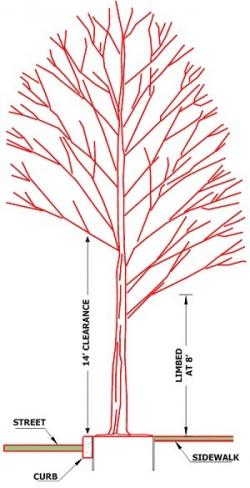Road Preservation
The City maintains and updates a Pavement Preservation Plan that includes all streets within the City of Camas. The City uses several different methods to preserve roads and to protect the public’s investment in its transportation infrastructure.
This road work does disrupt drivers, and in some cases, requires roads to be temporarily closed.
When a street is closed for a surface treatment, construction workers will allow police cars, fire engines and ambulances responding to emergencies to drive through the work zone.
In some cases, federal regulations require the City to build or upgrade sidewalk curb ramps so they are accessible to wheelchair users and other people with disabilities.
Asphalt overlay
This surface treatment is for structural reinforcement. The depth of an overlay is between 1 and 4 inches.
Surface defects and irregularities are repaired prior to adding a new layer of hot mix asphalt.
In some instances, a thin layer of asphalt is applied to subdivision or access roads that have surface irregularities but remain structurally sound.
This paving, known as a thin lift, evens the road surface and corrects some drainage issues. It provides a more modest treatment on less heavily used roads than a standard overlay.
There are some driver delays with asphalt overlays. Flaggers typically can guide vehicles through the construction zone without fully closing the road.
Slurry seal
This surface treatment is applied to prevent moisture from infiltrating a road's subgrade.
These roads are structurally sound and do not need reinforcement.
Emulsified oil and finely crushed aggregate are premixed on a truck and then applied to the road surface. This treatment requires closing the road for one day to allow curing before the road can reopen to traffic.
Residents who live along streets scheduled for treatment will receive a letter and brochure in the mail prior to the work scheduled.
Door hangers will be used to alert residents before work begins on their street. Residents should watch for a door hanger providing seven days’ notice, followed by a second door hanger 24-48 hours before application.
Chip seal
Chip seal is used to help seal the surface and prevent moisture from damaging roads. Each area is completed within 1 - 3 days.
Roads will not be closed, but you may experience temporary traffic delays. Watch for loose gravel and fresh oil signs and please drive slowly through work zones.
Rubberized asphalt cape seal
The treatment consists of two phases. In the first phase, an asphalt rubber binder, consisting of paving asphalt, oil and crumb rubber from ground-up used tires and natural rubber, is applied to the road, followed by a layer of crushed rock. The rock, which is pre-coated with an asphalt binder, is pressed into the asphalt-oil-rubber mix using rollers.
The second phase, typically done 1-2 weeks later, is applying a slurry seal to further preserve the surface. This is a one-day process that requires closing the road.
Micro seal
Micro seal is similar to a slurry seal, only that it uses larger pieces of rock.. A micro seal dries faster than a slurry seal and is used on multilane roads, which allows traffic to pass on one lane while the other is being treated.
To further ease traffic disruptions, sand can be shoveled onto intersections so vehicles can drive over the treated surface only minutes after it has been applied.
Full-depth reclamation
This is a major treatment to rebuild a badly damaged road. The work is sometimes referred to as base stabilization because it involves pulverizing the degraded pavement and adding cement to stabilize the roadway base.
The reconstructed road, once it has been graded to create a smooth driving surface, receives a new layer of pavement, such as an asphalt overlay or a chip seal.
There are substantial delays to drivers during this treatment.

Vegetation trimming
In preparation for summer road work, residents sometimes need to prune their vegetation so construction vehicles can get close to the curb.
In addition, vegetation needs to be trimmed to improve traffic visibility and remove sidewalk or pedestrian obstructions.
Homeowners are responsible for pruning and maintaining their vegetation, including debris disposal.
All low-hanging material needs to be trimmed to provide 14 feet of vertical clearance from the top of the curb and 8 feet of clearance from the full width of the sidewalk.
Bushes, shrubs and other low vegetation also need to be trimmed so they don’t hang into the street.
If residents do not trim their vegetation, Street crews will cut it. This work may not be done to the quality desired by many residents.
For this reason, residents are encouraged to trim their vegetation.


